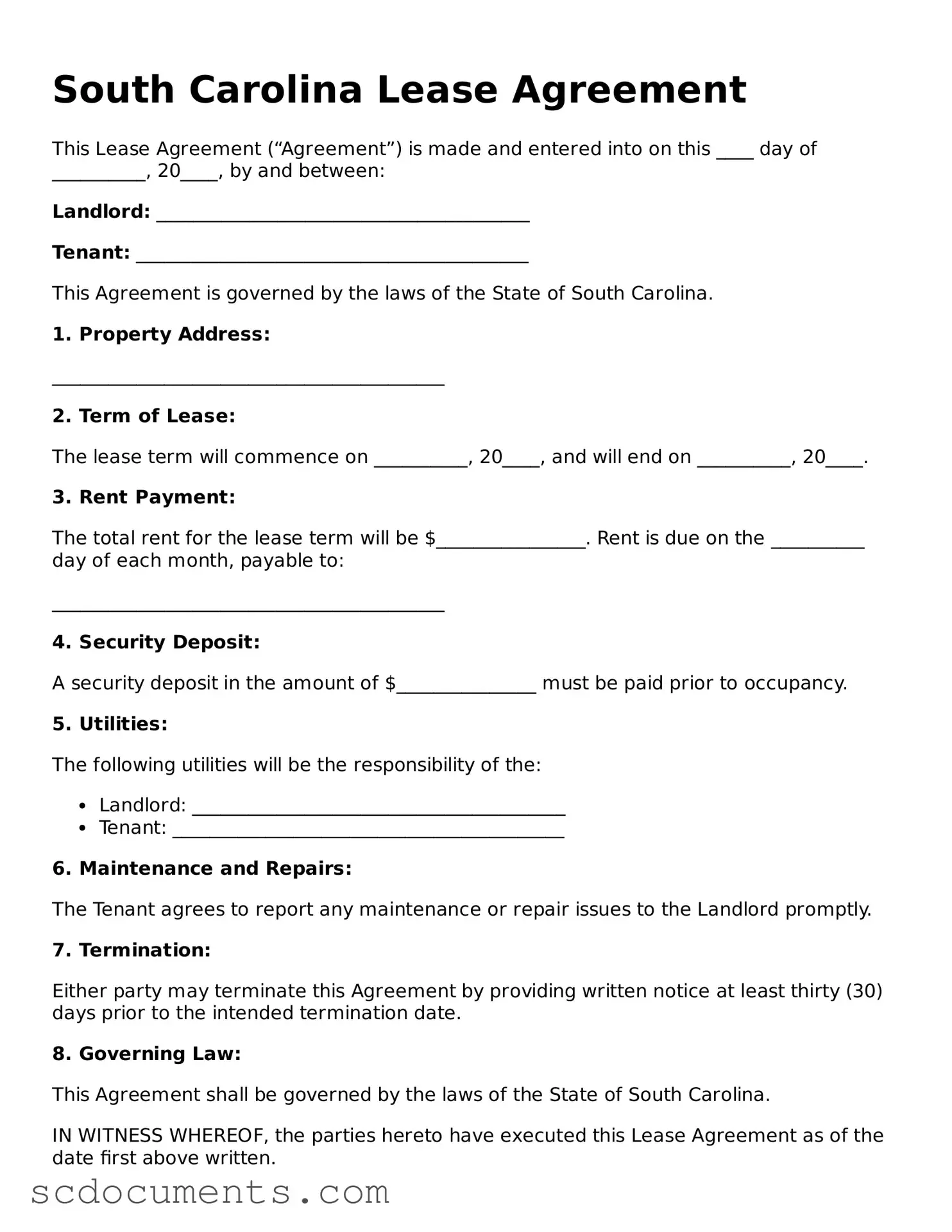Legal South Carolina Lease Agreement Form
A South Carolina Lease Agreement form is a legal document that outlines the terms and conditions between a landlord and a tenant for renting a residential or commercial property. This form serves to protect the rights of both parties while ensuring clear communication regarding rental obligations. Understanding the specifics of this agreement is crucial for a smooth landlord-tenant relationship.
Access My Lease Agreement
